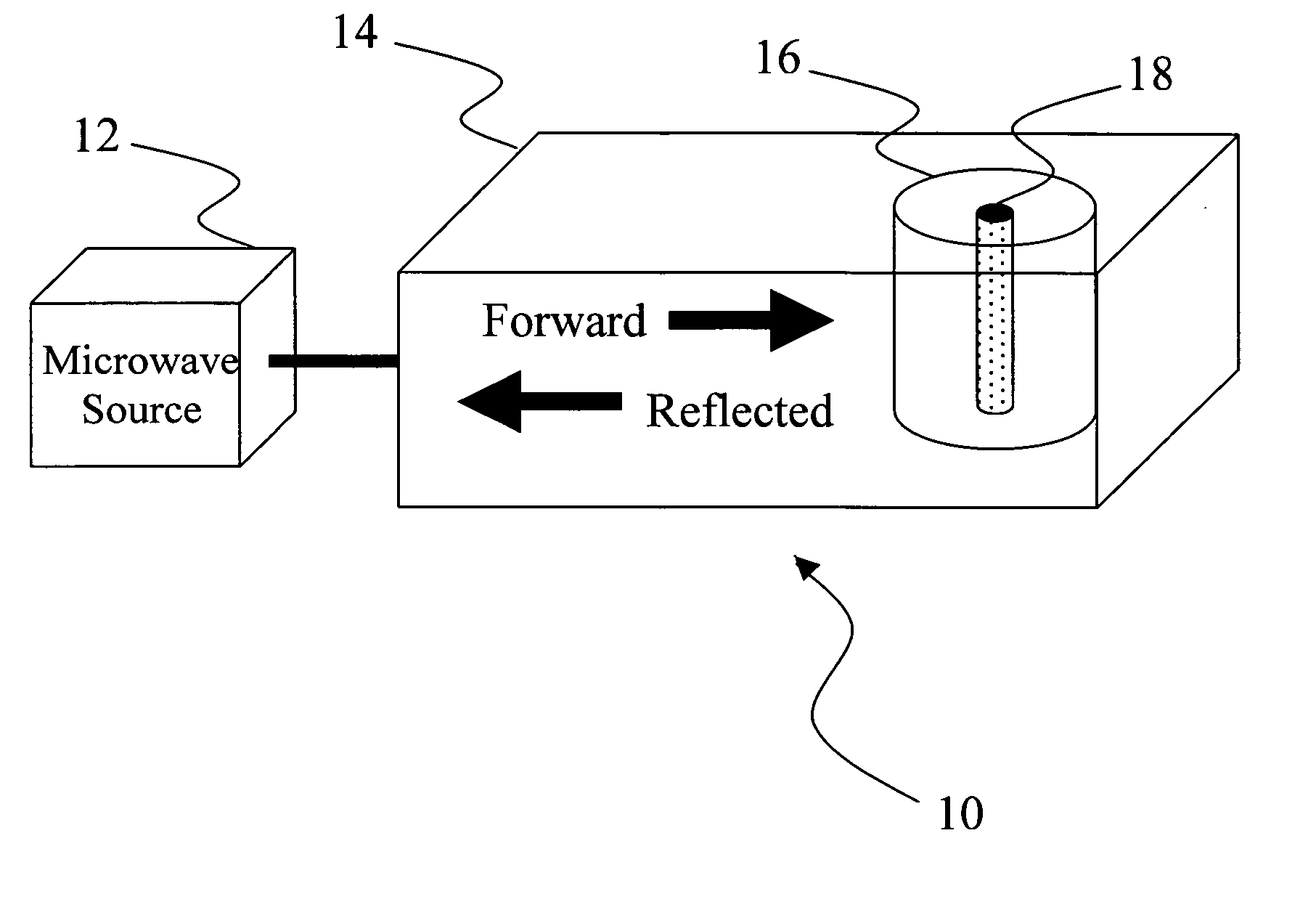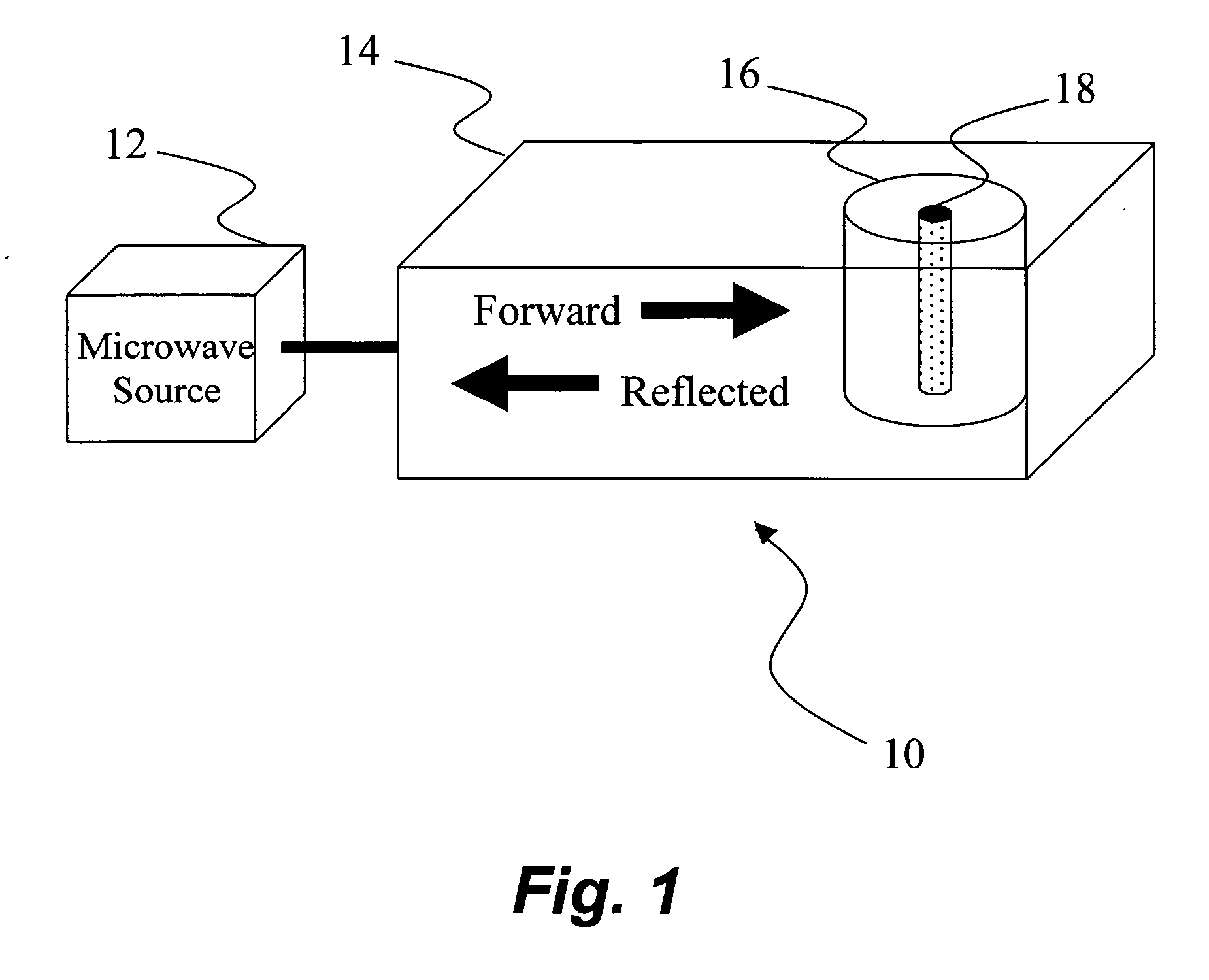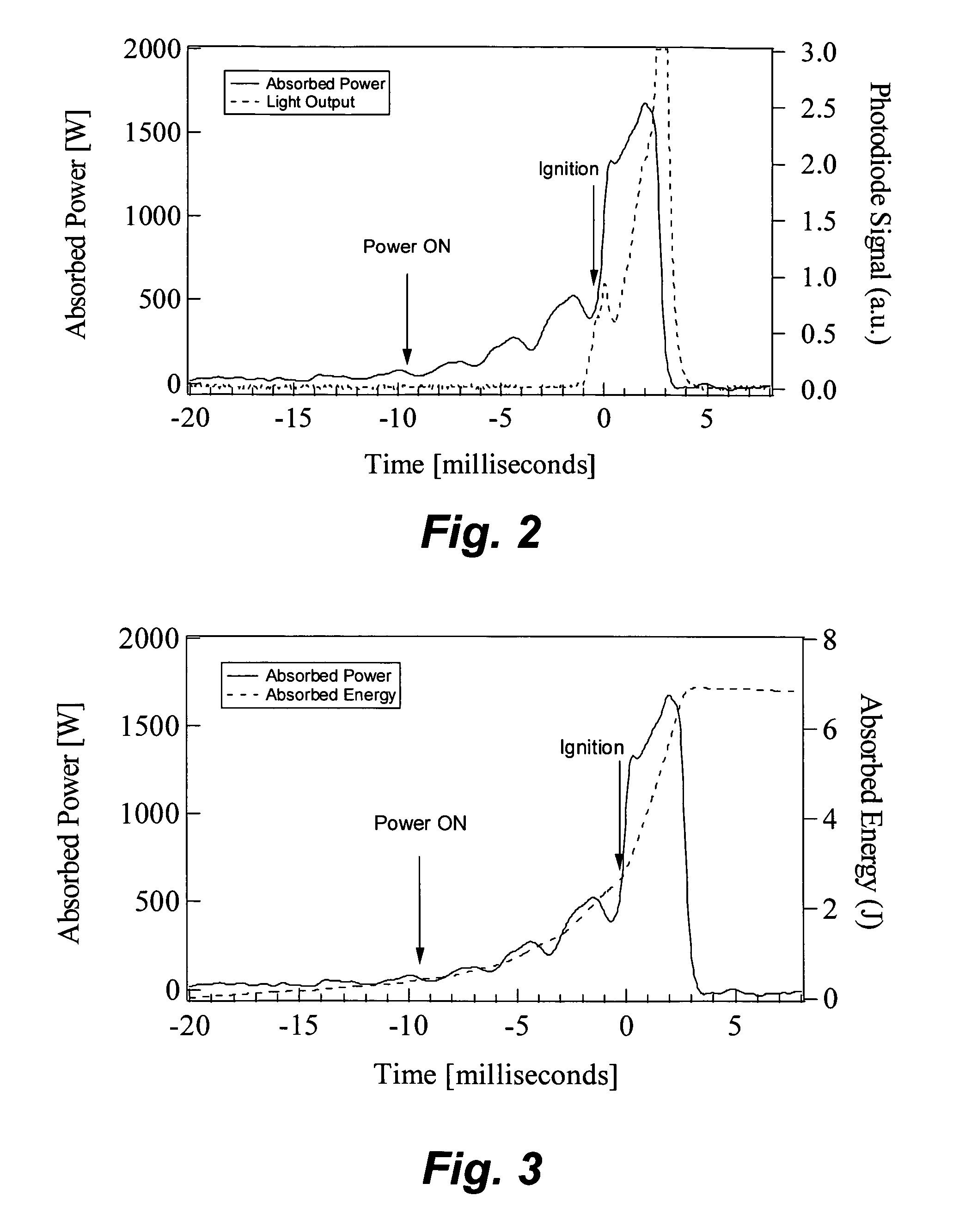Microwave heating of energetic materials
a technology of energetic materials and microwave ignition, which is applied in the field of microwave ignition of explosive charges, can solve the problems of too long ignition time for a practical use of microwave ignition
- Summary
- Abstract
- Description
- Claims
- Application Information
AI Technical Summary
Benefits of technology
Problems solved by technology
Method used
Image
Examples
example 1
[0039] Ignition of a mixture of HMX with carbon nanotubes. A mixture of HMX (0.5 g) and carbon nanotubes (1 percent by mass) was prepared and ignited by microwave radiation. FIG. 2 shows a graph of absorbed power as a function of time (solid line, power in units of Watts, time in units of milliseconds) of the mixture. FIG. 2 also shows the photodiode signal (i.e. the light output) as a function of time (dashed line) from the mixture, along with the absorbed power. As FIG. 2 shows, the microwave power was turned on at a time of minus 10 milliseconds, and ignition occurred about 10 milliseconds later.
[0040]FIG. 3 shows a graph of the absorbed microwave power as a function of time (solid line) and a graph of the absorbed energy as a function of time (the dashed line) of the mixture. The absorbed energy is the integral of the absorbed power). The total absorbed energy was 7.5 Joules (J) at an average rate of 750 Watts for a duration of 10 milliseconds. For comparison, raising the same ...
example 2
[0041] Evidence for variable energy release rate. The size of container fragments generated during an explosive event provides a measure of the energy release rate (see, for example, P. R. Lee, “Hazard Assessment of Explosives and Propellants” in Explosive Effects and Applications, J. A. Zukas and W. P. Walters, Springer-Verlag (New York, 1998) p. 327, incorporated by reference). For this example, two experiments were performed to examine the fragment size of the pyrex sample container and the quartz containment cylinder. In both experiments, the nominal conditions were the same: incident power, sample size and sample loading were nominally identical. Absorbed power data was not recorded but inconsistencies between the two experiments resulted in a difference in impedance matching such that the absorbed power was different, which is indicated by the difference in sizes of the fragments in FIG. 4 and FIG. 5. FIG. 5 (experiment 1) shows larger fragments than those of FIG. 4 (experimen...
PUM
 Login to View More
Login to View More Abstract
Description
Claims
Application Information
 Login to View More
Login to View More - R&D
- Intellectual Property
- Life Sciences
- Materials
- Tech Scout
- Unparalleled Data Quality
- Higher Quality Content
- 60% Fewer Hallucinations
Browse by: Latest US Patents, China's latest patents, Technical Efficacy Thesaurus, Application Domain, Technology Topic, Popular Technical Reports.
© 2025 PatSnap. All rights reserved.Legal|Privacy policy|Modern Slavery Act Transparency Statement|Sitemap|About US| Contact US: help@patsnap.com



